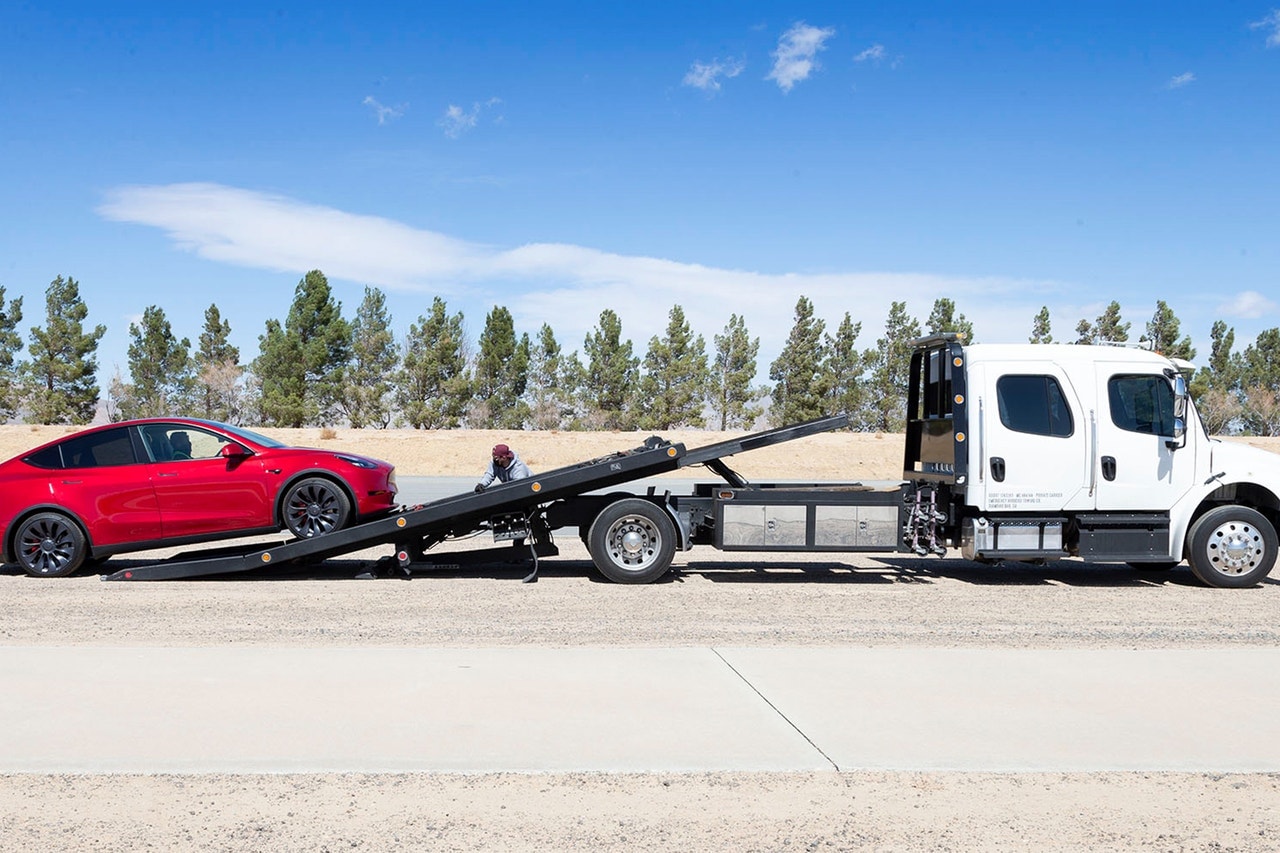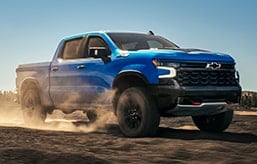- We drove two Tesla Model 3s and a Tesla Model Y until their batteries were completely drained.
- The results reveal a lot about EV behavior and just how far you can drive before the battery is empty.
- Here's what you do in case it happens to you.
What Happens When Your Tesla Dies?
We ran the battery dead on three Tesla vehicles to find out
What happens when my Tesla's battery dies?
Your Tesla will no longer be able to drive once its main battery pack runs out of power. You can monitor how much power your Tesla's battery pack has by looking at the range and battery meter located at the top of your Tesla's large touchscreen display. The color of the little battery icon will change from green to yellow to red as the battery gets down to its last bit of juice. Think of it like a low-fuel light on a gasoline car — or the battery indicator on your phone. Additionally, Tesla's vehicles give you plenty of warning as the end draws near, with multiple notifications popping up to tell you that the battery is getting low and needs to be recharged soon.
When it gets really low, your Tesla will suggest charging locations like the nearest Supercharger and let you know when you're getting out of range of the nearest one. There are plenty of warnings before you strand yourself, so heed them.
What should I do if my Tesla dies during a drive?
First off, don't panic. The vehicle isn't broken. Being stuck on the side of the road is never fun, but, as with running out of gas or getting a flat tire, help is only a phone call away. Unfortunately, getting back on the road isn't as simple as adding a bit of fuel or putting on a spare tire.
You will need to call a flatbed tow truck, not just a tow truck that lifts one set of wheels. Tesla says you could seriously damage the vehicle if it's not on a flatbed. If you have a AAA membership or if your car insurance policy includes towing, we suggest requesting assistance through them. If that's not an option, the best bet is to search online for a local tow truck for assistance.
Once the tow truck has arrived, you need to put the Tesla into Transport mode, which is basically a setting that puts the vehicle in neutral so it can be pulled up on the tow truck. The setting is located in the Service menu in the touchscreen. At that point, we recommend having the Tesla towed to the most convenient charging station, be it your home or a Tesla Supercharger.
Your Tesla's 12-volt battery is important too
If you run your Tesla until it can no longer move under its own power (i.e., its main EV battery is completely drained) the charge within the low-voltage 12-volt battery (the battery you usually jump-start in non-electric cars) will no longer be maintained. That battery is essential to running many of the interior electronics as well as helps facilitate the charging of the high-voltage battery. In other words, you need a working 12-volt battery to recharge your Tesla.
If you can't access the Service menu because your 12-volt battery is out of juice, you'll need to energize it (basically jump-start it) in order to put the vehicle into Transport mode. Tesla lists two slightly different procedures depending on if your 12-volt battery is a traditional lead-acid battery or a newer lithium-ion battery. We should note that you should not attempt to jump-start another vehicle using your EV.
The low-voltage 12-volt battery will need to have enough juice for your vehicle to begin charging the main EV battery pack. So if it discharges again while being towed to a charging station, you may need a second jump-start once you're ready to plug it in
Am I ready for an EV?
EV ownership works best if you can charge at home or at work. This typically means a 240-volt home installation, but you could also have a similar setup at your office or other places your car is already parked for several hours each day. Don't expect a regular 120-volt household outlet to suffice unless you've got a plug-in hybrid, in which case overnight charging at home is feasible.
If you can't charge at home, charging at a charging station could take at least 10 times longer than at a gas station. With public charging infrastructure still in its infancy, the user experience can be maddeningly inconsistent. Tesla owners tend to rave about the reliability and speed of the company's proprietary Supercharger stations, but rival DC fast-charging options have so far been plagued by technical issues and overcrowding. It's an evolving landscape and our best advice is to do your research on the available options for the EV you want to buy.
Adding a 240-volt home charging system could cost up to $1,000 or more. If your existing electrical service can handle the additional demands of EV charging, you may be able to add Level 2 charging at home for less than a grand, including installation. But your costs will multiply if you need to upgrade your electrical panel or add a dedicated circuit.
If you're unable to get to a charging station before the remaining range creeps down to zero, you're not doomed. In our testing of three Teslas, we found they were able to maintain 65 mph for roughly 10 to 20 miles after the range indicator hit zero miles. Should you count on that extra range in normal use? Absolutely not. But it's nice to know that there's at least something in reserve.
That something is called a buffer, and once it runs out, your Tesla will no longer be able to maintain a constant highway speed. In our testing, all three Teslas slowed down gently from 65 mph. The drop-off is gradual enough that there's ample time to change lanes and pull off to the side of the road. When the car can no longer maintain more than 15 mph (even with the pedal to the floor), a warning pops up that says the vehicle will be unable to drive soon. Finally, the vehicle rolls to a halt and puts itself into park.
We also tested on city streets, and the story was similar, though the most notable warning sign was sluggish acceleration where the car struggled to get up to even 25 mph. Not only is this potentially dangerous, but it's mostly avoidable. And the hassle of recharging a dead EV really outweighs any benefit of running to the ragged edge of empty.
Edmunds says
Running the battery empty in a Tesla (or any EV for that matter) is more troublesome than running out of gas, but there's usually enough warning and range built in that you can safely pull over and call for help. But for the sake of saving yourself a world of hassle, and potential damage to your EV battery, you're better off not running your car till it's completely out of juice.
Am I Ready for an EV?
- EV ownership works best if you can charge at home (240V outlet)
- Adding a home charging system is estimated to cost $1,616 in
- Edmunds is partnering with Treehouse, an independent provider of home EV installation services. Learn more about the installation services partnership



 by
by